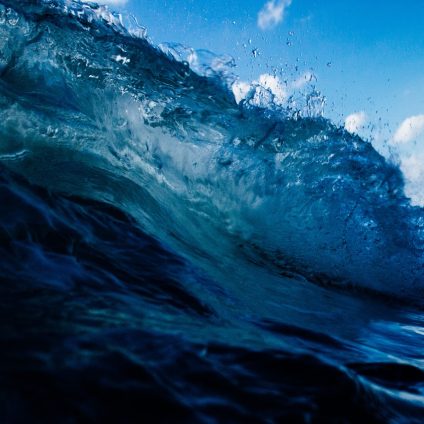Ocean currents provide steady, predictable renewable energy, helping reduce fossil fuel use and support grid stability.

Ocean currents offer a steady and highly predictable form of renewable energy, making them a promising resource for reducing dependence on fossil fuels—especially when integrated with other clean energy sources.
Why ocean current energy deserves greater attention
Ocean currents hold vast potential as a source of clean, renewable energy.
Covering 70% of Earth’s surface, oceans could play a key role in easing pressure on traditional power sources amid growing global electricity demand.
Between 2015 and 2019, global energy consumption grew at an average annual rate of 2.4%, with fossil fuels still dominating electricity production. Increasing the share of renewables in the global energy mix is now essential to cut greenhouse gas emissions and reduce reliance on fossil fuels.
Related article Deep-sea mining will leave the ocean bottom without oxygen
Marine renewables lag behind wind and solar
Compared to other renewable sources, marine energy, especially from ocean currents, offers greater predictability and more consistent electricity generation. This makes it a particularly stable and clean option for coastal and island regions.
Despite these advantages, the development of marine renewables remains far behind wind and solar energy. Most studies to date have focused only on estimating the theoretical potential of ocean currents, without a global assessment based on real-world data.
Identifying the most suitable locations for ocean current energy projects is now a key step toward unlocking their full potential.
Global assessment of ocean current energy
A study titled Drifter-based global ocean current energy resource assessment by Florida Atlantic University’s College of Engineering and Computer Science, published in Renewable Energy, offers a comprehensive global analysis of this resource.
The researchers used more than three decades of data from NOAA’s Global Drifter Program (GDP), which includes roughly 1,250 satellite-tracked buoys that monitor ocean currents and positions.
For this study, over 43 million data points were analyzed, covering the period from March 1988 to September 2021.
Where power density is highest
The research found that waters off the eastern coast of Florida and South Africa show exceptional potential for electricity generation, with power densities exceeding 2,500 watts per square meter—around 2.5 times higher than top-tier wind resources.
These areas also benefit from relatively shallow waters (around 300 meters), making them suitable for deploying ocean current turbines.
Other promising zones include the southeastern U.S. coast from Florida to North Carolina and the eastern and southeastern coasts of Africa, including Somalia, Kenya, Tanzania, South Africa, and Madagascar. These regions show power densities above 2,000 watts per square meter.
Where energy extraction becomes more complex
Some coastal areas such as the eastern Pacific (Japan, Vietnam, the Philippines), northern South America (Brazil and French Guiana), and eastern Australia show lower power density levels.
In places like South Africa and Japan, despite high power density, deep waters (1,000 meters or more) and complex flow patterns make energy extraction more challenging.
Advanced mooring systems would be needed to stabilize turbines in such environments, driving up both installation and maintenance costs.
Combining multiple renewable energy sources
Seasonal variations play a significant role in energy availability and may align with peak electricity demand periods, such as when air conditioning use spikes. This could make ocean currents a reliable source of renewable energy when integrated effectively into the broader energy mix.
Researchers emphasize the need to factor in these seasonal and energetic characteristics to ensure smooth integration with other renewables.












